Basically, all sorts of negative feelings.
Character: Sakura Chiyo 佐倉千代
Anime: Gekkan Shoujo Nozaki-kun 月刊少女野崎くん (Episode 2)
Anime: Gekkan Shoujo Nozaki-kun 月刊少女野崎くん (Episode 2)
Rendering
The blue lines are typically blue in anime, except in black and white manga, where they aren't blue, they are black.
Character: Rimuru Tempest リムル=テンペスト
Anime: Tensei shitara Slime Datta Ken, 転生したらスライムだった件 (Episode 21)
Anime: Tensei shitara Slime Datta Ken, 転生したらスライムだった件 (Episode 21)
And they're drawn in parallel, typically vertically, except when they're drawn horizontally.
Character: Shiraha Raphiel Ainsworth 白羽=ラフィエル=エインズワース
Anime: Gabriel DropOut, ガヴリールドロップアウト (Episode 3)
Anime: Gabriel DropOut, ガヴリールドロップアウト (Episode 3)
And they're typically straight, except when they're squiggly.
Left: Sullivan サリバン
Right: Suzuki Iruma 鈴木入間
Anime: Mairimashita! Iruma-kun 魔入りました!入間くん (Episode 1)
Right: Suzuki Iruma 鈴木入間
Anime: Mairimashita! Iruma-kun 魔入りました!入間くん (Episode 1)
And they're typically there, except when they aren't even there—there are no lines at all—but the same effect is achieved by using a blue or dark gradient on a character's face.
Left: Hikurakawa Sora 火鞍川曽良
Middle: Hinowa Tomori 日ノ輪泊
Anime: Jingai-san no Yome 人外さんの嫁 (Episode 4)
Middle: Hinowa Tomori 日ノ輪泊
Anime: Jingai-san no Yome 人外さんの嫁 (Episode 4)
In summary: the color, orientation, shape, and very presence of these lines may vary. And the usage varies, too. So there's no term to refer to all of them. The blue lines ain't blue. The vertical lines ain't vertical. And the lines ain't even lines.
That's just great.
You can't even call them parallel lines because parallel diagonal lines are used to render blushes in manga and that's a completely different thing from this thing. Those are rendered red, by the way.
But at least we know that diagonal lines are always red and always blushing, except when they are not.
Character: Gourry Gabriev ガウリイ・ガブリエフ
Anime: Slayers, スレイヤーズ (Episode 2)
Anime: Slayers, スレイヤーズ (Episode 2)
And that the red blushing lines are always diagonal, except when they are not.
Left: Furuhashi Fumino 古橋文乃
Right: Ogata Rizu 緒方理珠,
Anime: Bokutachi wa Benkyou ga Dekinai ぼくたちは勉強ができない (Episode 1)
Right: Ogata Rizu 緒方理珠,
Anime: Bokutachi wa Benkyou ga Dekinai ぼくたちは勉強ができない (Episode 1)
For the sake of reference, some terms that may tentatively refer to the blue lines this article is about:
- tate-sen
縦線
Vertical lines. (a term for these lines.) - tare-sen
垂れ線
Dripping lines. (another term, because they're often drawn like they're dripping downwards.) - kouka-sen
効果線
"Effect lines." Refers to lines drawn in the background or foreground of manga panels to show movement, emotion.
Usage
The typically blue lines are used in a bunch of ways, to express all sorts of blue feelings.Shock
Blue lines are drawn on a character's forehead when they're shocked, anxious, tense, afraid, scared, in panic, and so on.Such emotions can cause a sudden drop in blood pressure, which makes your face turn blue, or rather, turn pale. In English we usually say "pale," but in Japanese it's usually said "blue," aoi 青い.
Character: Kisaragi Amatsuyu 如月雨露
Anime: Ore wo Suki nano wa Omae dake kayo 俺を好きなのはお前だけかよ (Episode 2)
Anime: Ore wo Suki nano wa Omae dake kayo 俺を好きなのはお前だけかよ (Episode 2)
- kao-iro ga warui
顔色が悪い
The facial color is bad. (literally.)
[You] look unwell. - shokku de massao ni naru
ショックで真っ青になる
To become "pure blue" with shock.
To become pale with shock.
To go blue with shock. - ao-zameru
青ざめる
To blue-discolor. (literally.)
To become pale. (with shock, fear, etc.) - ganmen souhaku
顔面蒼白
The term one's face to turn pale from shock.
In the case of panic attacks, you'll also have the character sweating a lot.
Left: Togashi Yuuta 富樫勇太
Right: Tsuyuri Kumin 五月七日くみん
Anime: Chuunibyou demo Koi ga Shitai! 中二病でも恋がしたい! (Episode 2)
Right: Tsuyuri Kumin 五月七日くみん
Anime: Chuunibyou demo Koi ga Shitai! 中二病でも恋がしたい! (Episode 2)
- hiyaase
冷や汗
Cold sweat.
Not all shocks are serious emotional traumas, though. Most anime is comedic, so most shocks and usage of blue lines is, too, for comedic purposes.
Character: Kawamoto Akari 川本あかり
Anime: Sangatsu no Lion, 3月のライオン (Episode 4)
Anime: Sangatsu no Lion, 3月のライオン (Episode 4)
- gaan
がーん
*shock.* *disbelief.* (mimetic word.)
Yellow: Juushimatsu 十四松
Green: Choromatsu チョロ松
Blue: Karamatsu カラ松
Pink: Osomatsu おそ松
Gray: Ichimatsu 一松
Anime: Osomatsu-san おそ松さん (Episode 7)
Green: Choromatsu チョロ松
Blue: Karamatsu カラ松
Pink: Osomatsu おそ松
Gray: Ichimatsu 一松
Anime: Osomatsu-san おそ松さん (Episode 7)
- osoroshii ko!
恐ろしい子!
What a terrifying child!
Uneasiness
Blue lines drawn vertically around the eyes generally express uneasiness, discomfort, sickness, anxiety, disbelief, and so on.I guess they're drawn on the eyes because sometimes people squint in disgust, or because some nervous situations are eye-twitching. Both expressions would be complicated to render in manga.
Character: Yasaka Mahiro 八坂真尋
Anime: Haiyore! Nyaruko-san 這いよれ!ニャル子さん (Episode 1)
Anime: Haiyore! Nyaruko-san 這いよれ!ニャル子さん (Episode 1)
Some series use this symbol all the time in tense situations, just like a small sweat drop is used in some series during nervous situations
Character: Masaki Tenchi 柾木天地
Anime: Tenchi Muyou! Ryououki 天地無用!魎皇鬼 (OVA, Episode 1)
Anime: Tenchi Muyou! Ryououki 天地無用!魎皇鬼 (OVA, Episode 1)
Apprehension
Blue lines can be used to show a character is apprehensive, nervous, afraid, scared, worried, troubled, frustrated, and so on.
Character: Agatsuma Zenitsu 我妻善逸
Anime: Kimetsu no Yaiba 鬼滅の刃 (Episode 11)
Anime: Kimetsu no Yaiba 鬼滅の刃 (Episode 11)
- furueru
震える
To tremble. - kyoufu
恐怖
Fear. - kowai
怖い
Scary.
To feel scared of something.
Frown
I guess horizontal blue lines over a character's nose may be based on the wrinkles that appear on the nose bridge when you're furrowing your brow, though, to be honest, they really don't look like that.
Left: Aguri 亜玖璃
Middle: Uehara Tasuku 上原祐
Right: Hoshinomori Chiaki 星ノ守千秋
Anime: Gamers!, ゲーマーズ! (Episode 6)
Middle: Uehara Tasuku 上原祐
Right: Hoshinomori Chiaki 星ノ守千秋
Anime: Gamers!, ゲーマーズ! (Episode 6)
Such lines can be used in various ways, like when a character has a look of seriousness, anger, ill-intent, or just intense frustration.
Character: Amayadori Machi 雨宿まち
Anime: Kuma Miko くまみこ (Episode 1)
Anime: Kuma Miko くまみこ (Episode 1)
Gloom
Blue lines can be used when a character feels down, depressed, or gloomy.
Manga: Yotsuba to! よつばと! (Chapter 8, よつばとおえかき)
- zuun
ずーん
(sound effect used when a character suddenly feels down.)
Left: Red Blood Cell AA5100
Right: Red Blood Cell AE3803
Anime: Hataraku Saibou はたらく細胞 (Episode 2)
Right: Red Blood Cell AE3803
Anime: Hataraku Saibou はたらく細胞 (Episode 2)
- Context: AE3803 feels down after being reprimanded by her senpai 先輩, AA5100.
- ochikomu
落ち込む
To feel down. - hekomu
凹む
To be disheartened. - gakkuri
がっくり
*dejected.* - kurai
暗い
Dark. (somewhere without light.)
Gloomy. (a person's mood.) - kurai kao wo suru
暗い顔をする
To do a dark face. (literally.)
To appear gloomy. To seem depressed.
Those that vertical lines floating around a character's head represent a literal gloom, as in, a dark aura, a shroud of melancholy.
Anime: Chihayafuru ちはやふる (Episode 11)
- don'yori
どんより
When the sky becomes cloudy and feels heavy.
To seem gloomy and down, like a cloudy sky.
In some cases, a depressed character will have mushrooms on their head to exaggerate the extent of their gloominess.
Left: Alphonse Elric アルフォンス・エルリック
Middle: Winry Rockbell ウィンリィ・ロックベル
Right: Edward Elric エドワード・エルリック
Anime: Fullmetal Alchemist: Brotherhood, Hagane no Renkinjutsushi 鋼の錬金術師 (Episode 21)
Middle: Winry Rockbell ウィンリィ・ロックベル
Right: Edward Elric エドワード・エルリック
Anime: Fullmetal Alchemist: Brotherhood, Hagane no Renkinjutsushi 鋼の錬金術師 (Episode 21)
This happens due to a pun:
- jimejime
ジメジメ
Damp. Humid. (the ideal place to grow mushrooms.)
Gloomy. Melancholic. Depressed. (the ideal feeling to grow mushrooms.)
In other cases, spirits may be drawn floating around the character. These are often drawn as simple spirals.
Left: Kijima Saki 貴嶋サキ
Right: Ayasaki Hayate 綾崎ハヤテ
Anime: Hayate no Gotoku! ハヤテのごとく! (Episode 7)
Right: Ayasaki Hayate 綾崎ハヤテ
Anime: Hayate no Gotoku! ハヤテのごとく! (Episode 7)
Left: Akiyama Mio 秋山澪
Right: many irrelevant characters
Anime: K-On!, Keion! けいおん! (Episode 6)
Right: many irrelevant characters
Anime: K-On!, Keion! けいおん! (Episode 6)
In some cases, character are drawn without color, blank, when they're stunned. Similarly, they may be drawn turning into stone, petrified due to shock.
Defeat
Vertical lines can also be used when a character feels defeated or hopeless. In such cases, it's common to exaggerate their tragedy by rendering a spotlight on them, as if they were on a play.
Character: Kageyama Shigeo 影山茂夫
Anime: Mob Psycho 100 II (Season 2) (Episode 2)
Anime: Mob Psycho 100 II (Season 2) (Episode 2)
- chiin...
チーン・・・
Ting. The sound of a bell, specifically the ones tinged in a household Buddhist altars before praying for deceased family members. In anime, tinged when characters feel kinda dead inside.
- orz
(literally this pose) - haiboku-kan
敗北感
A feeling of defeat.
Shadow
When the blue lines are drawn horizontally from inside a character's body to outside of it, that's supposed to be a shadow, I mean, that's supposed to be their body casting a shadow, and that shadow is drawn as parallel horizontal lines.This happens when they're gloomy, when they're depressed, disheartened. Sometimes they're told something that makes them feel alienated, so they will just go sit alone in a dark corner sulking and casting a shadow.
Left: Fujioka Haruhi 藤岡ハルヒ
Right: Suou Tamaki 須王環
Anime: Ouran High School Host Club, Ouran Koukou Hosuto-Bu 桜蘭高校ホスト部 (Episode 1)
Right: Suou Tamaki 須王環
Anime: Ouran High School Host Club, Ouran Koukou Hosuto-Bu 桜蘭高校ホスト部 (Episode 1)
- yuuutsu
憂鬱
Melancholy.
Other times, it's something that left them dumbfounded or speechless
Left: a cop
Right: Usa Kazunari 宇佐和成
Anime: Bokura wa Minna Kawai-sou 僕らはみんな河合荘 (Episode 1)
Right: Usa Kazunari 宇佐和成
Anime: Bokura wa Minna Kawai-sou 僕らはみんな河合荘 (Episode 1)
Character: Dino ディーノ
Anime: Blend S, ブレンド・S (Episode 5)
Anime: Blend S, ブレンド・S (Episode 5)
- Dino's soul is coming out of his mouth, but he's still alive, he just figuratively died a little bit.
It's worth noting that parallel lines are often used to draw shadows in general, an art technique called cross-hatching.
Well, technically it's called "cross"-hatching because you're supposed to be crossing parallel lines in two or more directions, just one direction doesn't cross anything but kind of also counts.
Such effect can be used to create shadows on a characters' face, like when their expression is dark and serious, or dark and creepy.
Character: Handa Sei 半田清舟
Anime: Barakamon ばらかもん (Episode 8)
Anime: Barakamon ばらかもん (Episode 8)
Character: Honda Hanako 本田華子
Anime: Asobi Asobase あそびあそばせ (Episode 2)
Anime: Asobi Asobase あそびあそばせ (Episode 2)
Character: Nakano Itsuki 中野五月
Anime: Gotoubun no Hanayome 五等分の花嫁 (Episode 1)
Anime: Gotoubun no Hanayome 五等分の花嫁 (Episode 1)
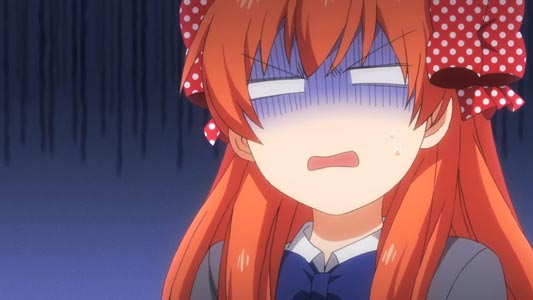
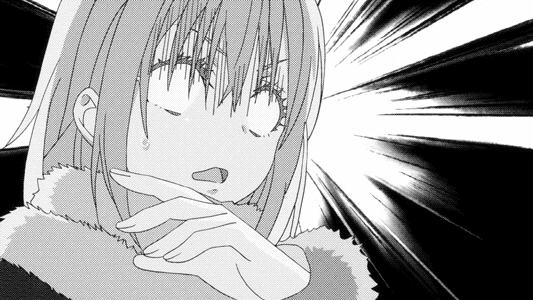
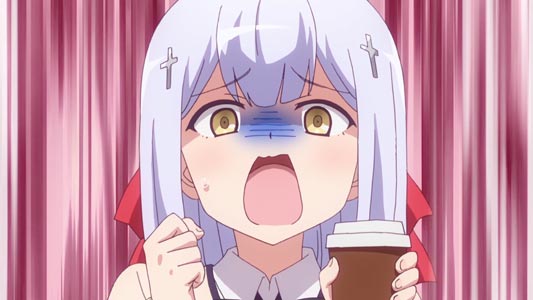
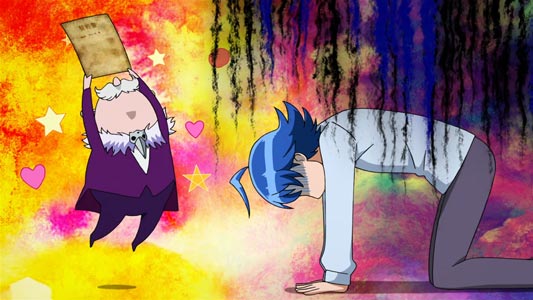
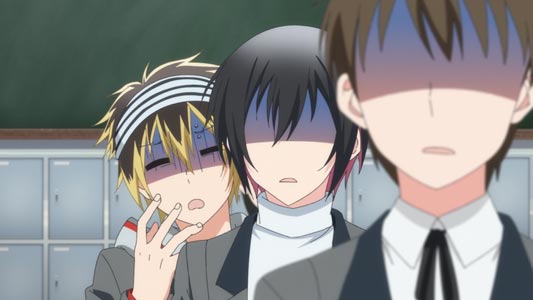
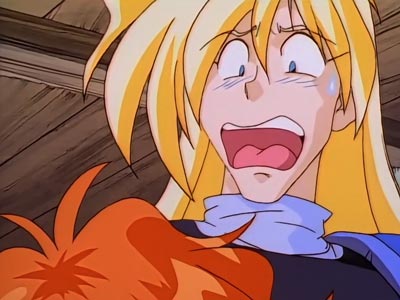

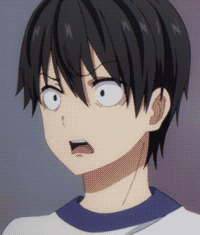
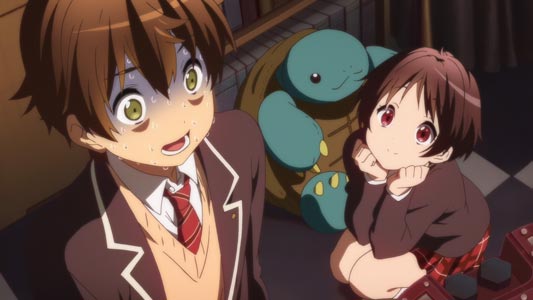
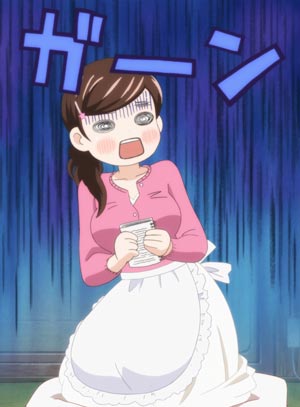
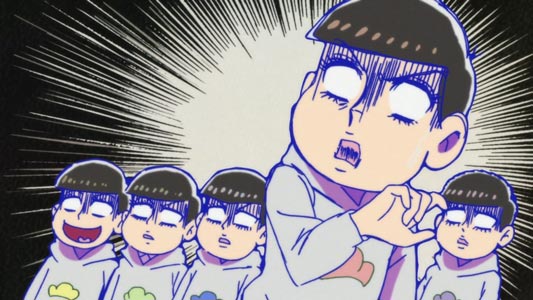
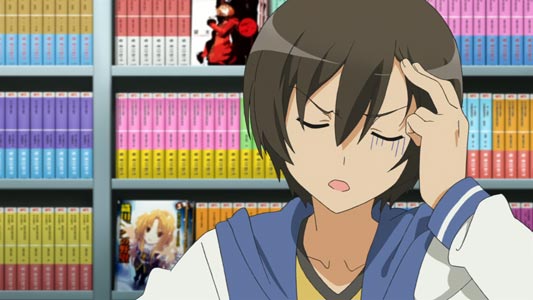
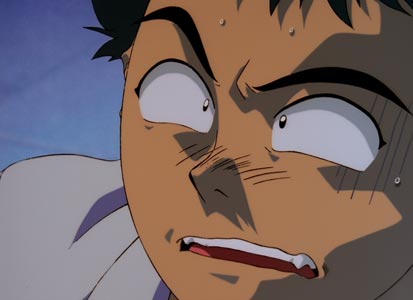

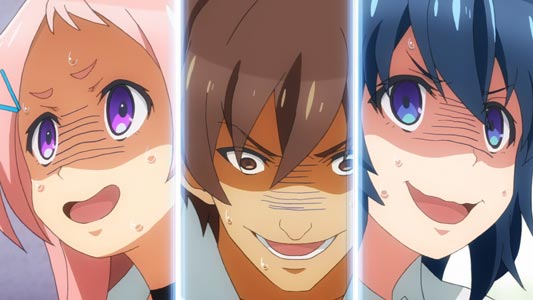
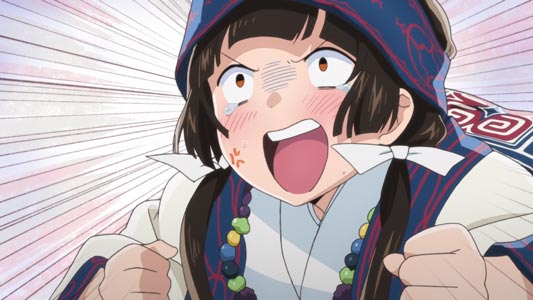
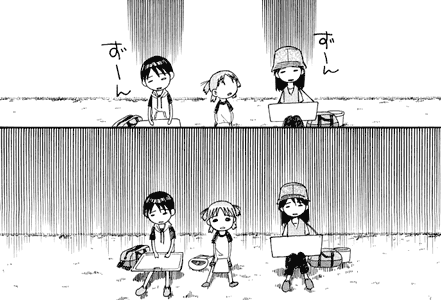

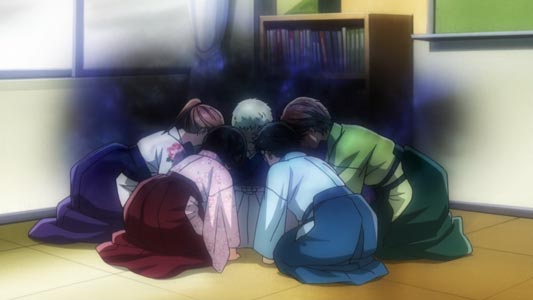
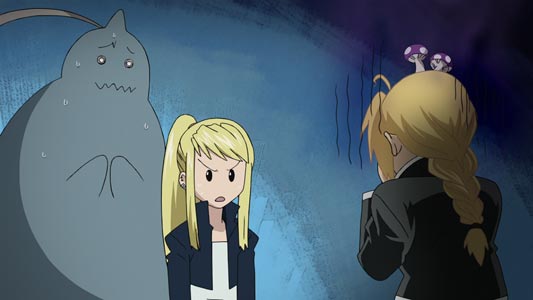
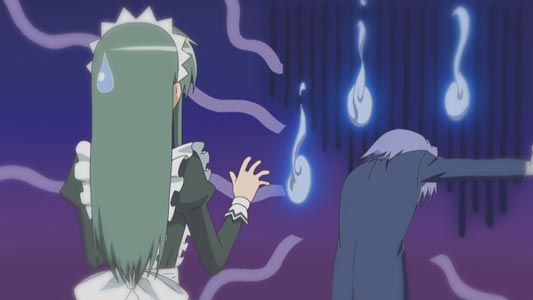
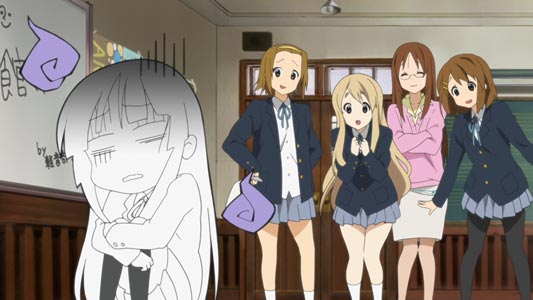
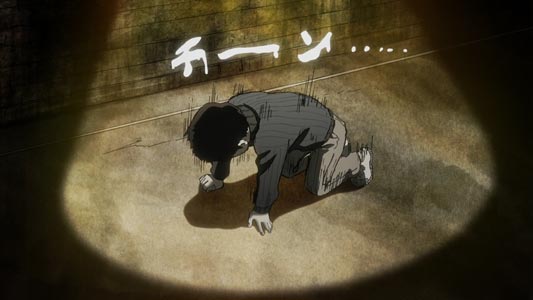
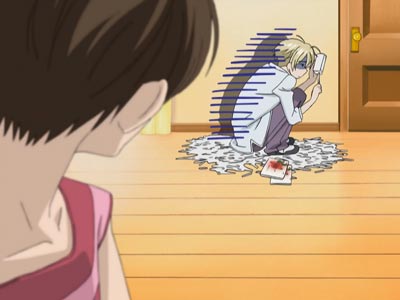
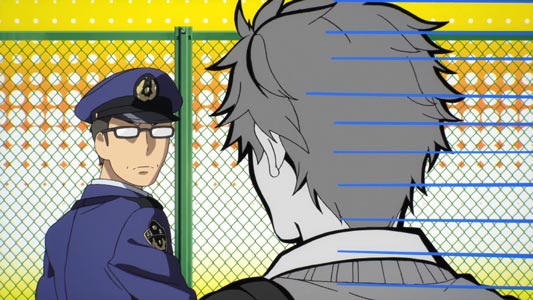

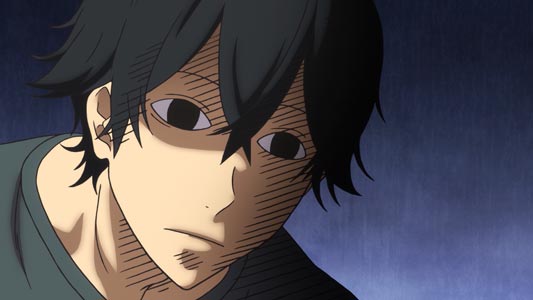
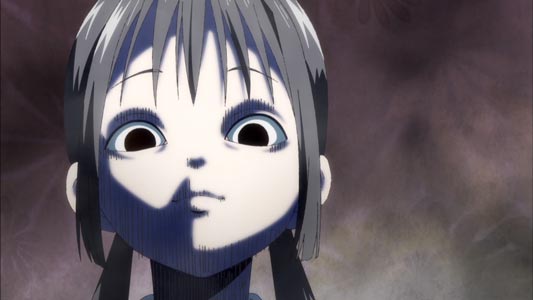
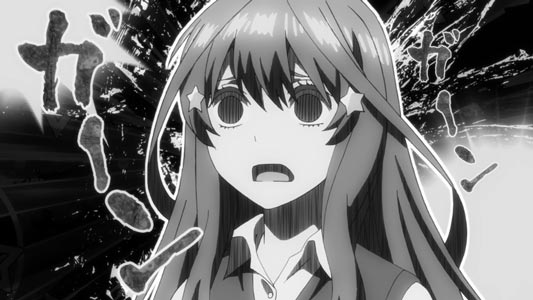
No comments: